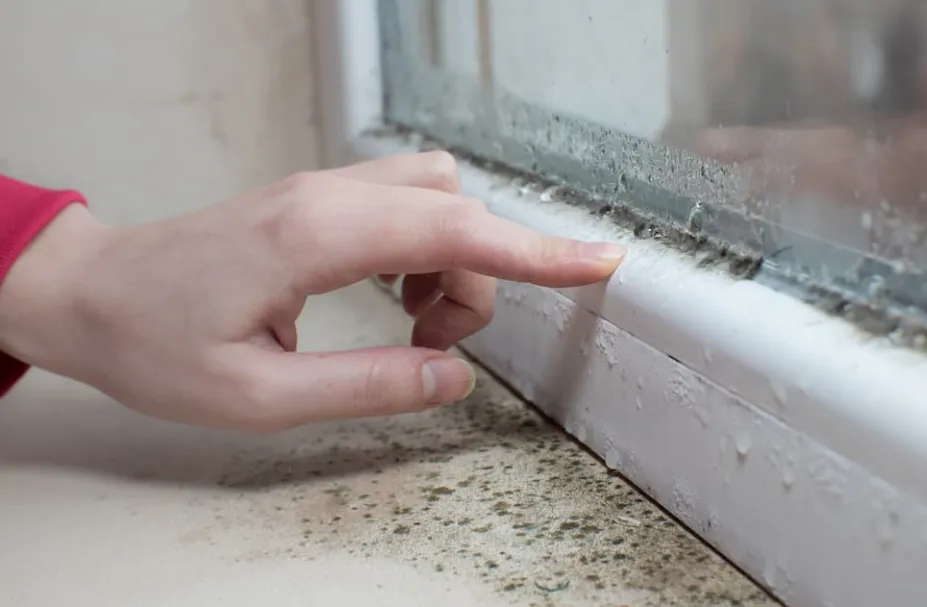Mold—an unwelcome yet common intruder in many dwellings—can flourish unexpectedly when the conditions are just right. It’s not merely an aesthetic concern; unchecked mold growth can damage materials, compromise indoor air quality, and even pose serious health risks. When trapped moisture meets porous surfaces and time, mold spores can take hold and multiply fast. That’s why it’s crucial to understand both why mold takes root in our homes and how to address it effectively, including employing proper defense against mildew to safeguard your home.
1. Why Mold Happens: Identifying Common Triggers
Mold needs just a few elements to thrive: moisture, a food source (like cellulose in wood, drywall, fabrics), and enough time to grow. The most common moisture culprits include:
- Leaks—from roofs, plumbing, or appliances—introduce water into structural cavities or behind walls.
- Condensation occurs on cold surfaces such as windows or metal pipes, especially in poorly insulated spaces.
- High humidity—often due to geographic location or inadequate ventilation in kitchens, bathrooms, basements, or crawl spaces.
- Indoor drying of clothes or the use of humidifiers without proper control.
- Inadequate drainage or groundwater intrusion near foundations.
- Wet carpets or rugs from spills or flooding that stay damp for too long.
When these conditions persist, mold begins growing as fuzzy or discolored patches—often hidden behind walls or under floors.
2. Health Impacts: Even the Unseen Can Harm
For most people, small amounts of mold may only irritate the respiratory system—triggering coughs, wheezing, and congestion. But for sensitive individuals—such as those with asthma, allergies, or compromised immunity—mold can provoke more serious reactions, including sinus problems, allergic rhinitis, and even lung infections in extreme cases.
Exposure over time may also contribute to chronic conditions; some molds release mycotoxins that can damage health severely upon prolonged inhalation, even if such cases are uncommon in typical residential settings.
3. Spotting the Signs: How to Know if Mold Is Present
Mold often announces itself with:
- Musty odors—sometimes the only early clue in hidden areas.
- Visible discoloration—dots, blotches, or staining on walls, ceilings, or fabrics.
- Condensation or water damage—such as peeling paint, warped surfaces, or bubbling wallpaper.
- Allergy-like symptoms—coughing, sneezing, or itching, especially when in damp parts of the house.
When these signs appear—particularly near moisture-prone areas—it’s wise to look further, possibly behind walls, closets, or under carpeting.
4. What to Do When Mold Strikes
A. Assess the Scope
Small patches—less than a 3×3 ft area—might be manageable with safe DIY methods (e.g., soap, detergent, or non-bleach cleaners). Larger infestations, especially those indicating structural issues or widespread contamination, usually require professional attention.
B. Remove Moisture Sources
Simply cleaning the mold without addressing the underlying moisture only delays its return. Fix leaks promptly, improve drainage, raise ventilation efficiency, use dehumidifiers, and monitor humidity levels—keeping them ideally between 30–50%.
C. Clean and Contain
- For manageable areas, wear gloves, eye protection, and masks to avoid inhaling spores. Contain the area with plastic barriers and clean thoroughly.
- Avoid bleach—it often fails to kill mold at the root. Instead, use vinegar, hydrogen peroxide, or commercially recommended mold cleaners.
D. When to Call a Professional
If mold recurs after cleaning, affects porous materials, or involves widespread coverage, bring in trained specialists for inspection, containment, and remediation. Professionals can access hidden mold behind drywall or under flooring and may use tools like moisture meters, infrared imaging, or lab testing, which helps ensure thorough resolution.
For trusted inspections and mold-related services, consider resources like theinspectorscompany.com/ website at the end of the inspection process.
5. Preventing Future Mold: Set It and Forget It (Almost)
- Routine maintenance: check for leaks, clean gutters, and ensure proper roof and foundation drainage.
- Ventilation matters: always run bathroom fans during showers, use exhaust fans during cooking, and open windows when feasible.
- Keep humidity in check: use dehumidifiers in damp spaces, open laundry areas, and avoid indoor drying of clothes.
- Inspect regularly: go over basements, crawl spaces, and attics seasonally, and look behind furniture or stored items.
- Use mold-resistant materials: consider antifungal paint or moisture-resistant drywall in high-risk zones.
Final Thoughts
Mold thrives quietly but with potential consequences—structural, financial, and health-related. It takes just moisture, organic material, and time to transform a hidden patch into a full-blown infestation. Early action, targeted cleaning, and moisture control are your greatest tools in defending your dwelling.
And remember—a proactive, professional strategy is often the difference between a minor cleanup and a costly remediation.



